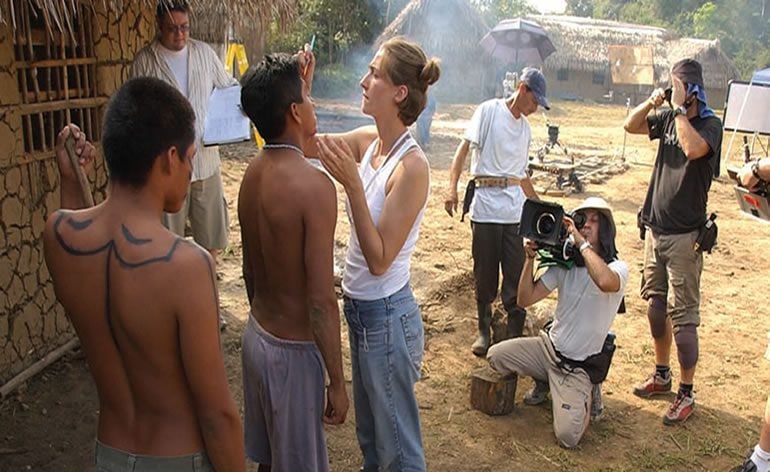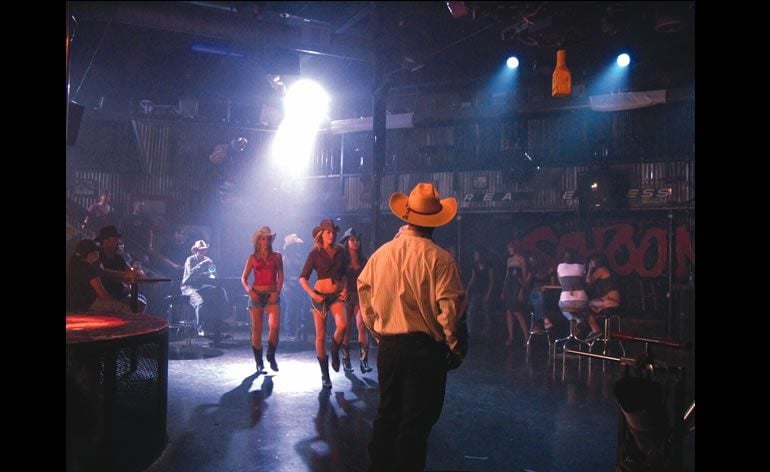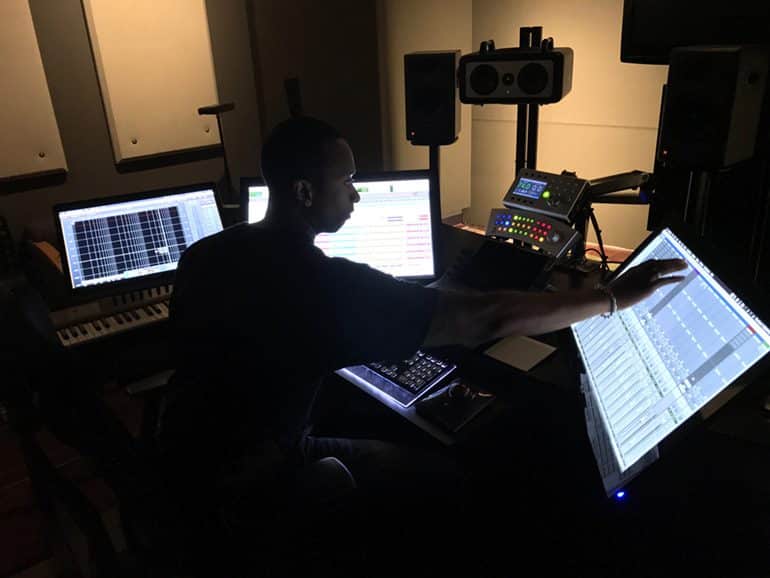Reference: StudentFilmmakers Magazine, August 2007. Makeup Effects Set Etiquette Do’s and Don’ts: Includes 7 Tips & Tricks by Todd Debreceni. Pages 42 – 44.
Whenever someone is starting out in a new job, there is going to be a ‘breaking in’ period, so to speak. Without some sort of protocol in place, a large set would be utter chaos. On smaller shoots, departmental lines are often blurred, but certain rules of etiquette always apply. Every craft has their own protocol for on-set behavior, but there are some universal standards.
DO’s and DON’Ts
DO show up early for your crew call. If your call is 0630, get there by 0615, or even 0600. That way, you can be on hand when the morning’s problems rear their ugly heads. Plus, you’ll get fresher coffee. Arriving early also impresses your department head, the director and the producer. Never arrive late to a shoot. That will lead to certain unemployment.
DO be polite. Use ‘please’ and ‘thank you.’ What you learned in Kindergarten still applies as an adult.
DO let people do their job.
DO learn and use people’s names.
DO ask questions about assignments if you’re in doubt about what to do.
DO pay attention to what’s going on in your department.
DO make your supervisor look good. While you’re at it, try to make everyone on your team look good.
DO stay near the action. Don’t leave the set, or wherever you’re meant to be, unless you tell one of the Assistant Directors. If you can’t be found if something goes wrong in your department and someone has to search for you, you may well have cost the production significant money while everyone waits for you. If this happens more than once, don’t expect to be asked back.
DO remain composed. Occasionally, crew members and even experienced department heads behave irrationally, or even unfairly. If someone bites your head off about something, don’t bite back – rise above it. Remain calm and courteous, and ask them how they’d like you to proceed. If it’s your boss or supervisor doing the yelling, then do what they ask quickly and without getting angry or upset. If the angry one is not part of your chain of command, then check with your boss before doing anything. If you can weather the storm, it will pass. By maintaining your composure in a confrontational situation, you’ve made yourself look good.
DON’T embarrass anyone, least of all your supervisor or anyone else you work with directly.
DON’T talk to other departments. This applies to problem-solving, not small talk. It may be frustrating, but if you have a problem or suggestion, talk to your supervisor about it. An obvious exception to this is safety.
DON’T brag or be boastful. Doing good work and being confident in your abilities is not the same as showing off. Let people find out for themselves, and realize how valuable you are to the department and the production. In other words: Be humble.
This list is not new, and there are likely as many variations of the set etiquette DO’s and DON’Ts list as there are rules on ‘em. For a makeup artist, it is generally acknowledged that you are expected to be on the set at all times. Ideally, you will be near the camera, but far enough out of the way so as not be a distraction, or blocking anyone’s view of the action. When in doubt about where to be, ask an AD.
A list of makeup DO’s and DON’Ts should also include these, (in no particular order):
DO’s
1. Dress professionally, but comfortably.
2. Bathe! We work in very close proximity to actors. While it may be tolerated to work with grips that have dirt under their fingernails and don’t wear deodorant, it is completely unacceptable for a makeup artist to have dirty hands and B.O.
3. Brush your teeth. This is no different than not wearing deodorant. When your face is inches away from your subject, your breath shouldn’t make them gag. At least keep gum or mints handy. As a service provider, you should want your subjects to be as comfortable and at ease as possible while you do your job.
4. Talk to your actors. When you’re applying or removing prosthetic appliances, let them know what you’re doing at every stage so there won’t be any surprises by sudden movements on your part.
5. Know your script, shooting schedule and daily call sheets. Knowing how many scenes your actor will be in will give you an idea of your application needs. If your actor is in every shot, your application process will be different than if your actor is being shot for a small insert or short scene, and you can adjust accordingly. The same is true of knowing what the camera setups are going to be. There is no need to do a 30-minute touch up on an actor who is partially obscured in a wide shot.
6. Be able to adapt and react. Thinking outside the box is very important, from actors’ allergies to certain materials, to a director getting a new idea for a makeup that should take two hours to apply and you only have ten minutes.
DON’Ts
1. You are providing a service. Your makeup is for the purpose of enhancing and supporting a performance. It’s never about the makeup, it is always about the performance. Don’t forget that.
2. Take your time. Don’t dawdle, but don’t let a zealous AD or impatient actor fluster you and make you hurry. When you rush, you make mistakes, and that ultimately leads to delays, frustration and short tempers. Don’t let yourself get sucked into a situation you can’t control.
3. Resist the temptation to interject yourself into the middle of a discussion or rehearsal to do touch-ups. A director’s last minute instructions to an actor always take precedence over makeup. Wait patiently until they’re done. Go in for touch-ups only if you’re certain it’s okay. If it appears you’re not going to get the time you need for your finals, inform the 1st AD. It’s the AD’s job to coordinate these things. Keep the AD or AD’s informed of potential problems before they occur.
4. If you are not sure how your makeup will read on camera, or if you need to double check a detail, ask the camera operator if you may look through the camera before looking through the lens.
This list is by no means complete, and is definitely subjective. However, it is a good place to start, and you may feel free to amend this to suit yourself and your own situation.
Tips & Tricks
Of all the crafts involved with telling stories on film, I’ve found makeup artists to be among the most giving and sharing folks in the industry. Here are some tips and tricks I’ve discovered myself, and some shared by amazing artists including Matthew Mungle, Neill Gorton, Dick Smith, Mike Smithson, Charles Porlier, Barry Koper, Tom Savini and Todd McIntosh. I hope you will find them useful.
1) Man’s makeup: 10 to 15 minutes; woman’s makeup: 25 to 30 minutes; woman’s glamour: 45 minutes to one hour; woman’s test makeup: one hour; small prosthetic or character makeup: one hour to an hour and a half; large prosthetic: two to three hours. These times are not absolute, just general guidelines, and somewhere to start.
2) Be quick, but gentle. When doing finals, the last thing an actor needs is to get beat up by you, or feel your panic just before the camera rolls.
3) Glad® Press’n Seal® makes a terrific skin texture stamp. You can use it when sculpting appliances in clay, or as a texture when sealing appliance edges with a skin-safe silicone like Alcone’s 3rd Degree or Smooth-On’s Skin Tite. When the silicone begins to kick, powder it, then press the texture stamp into the partially cured silicone. When it has fully cured, carefully remove the Press’n Seal®, and you’ve got flawless, invisible seams.
4) Clear acetate (.005) you can get an almost any art store is great for creating flat, flexible stencils, especially for work that needs to be repeated exactly. It’s good for creating small wounds, tattoos, eyebrows, etc.
5) Foam aquarium filter inserts make great stipple sponges. They’re less expensive than the ones you buy from makeup suppliers, and they’re ivory in color so you can tell immediately if it’s new or been used already.
6) Short of shelling out the bucks to purchase a menthol blower and menthol crystals, a jar of Vick’s® Vapo-Rub® wafted gently under an actor’s eyes will producer real tears.
7) Raisins and dried prunes make terrific scabs. Making skin look scabbed-over and starting to heal is tough to do. The texture of raisins and dried prunes is remarkably similar to scabbed-over skin.
Todd Debreceni began his career in entertainment with PBS while in graduate school at the University of Tennessee, and has worked at TBS in Atlanta, and 20th Century-Fox Television, Warner Bros., and Walt Disney Pictures in California. Todd has created makeup effects for many theatre productions, and is a recipient of a 2006 Denver Post Ovation Award for makeup. In addition to working in his Aurora studio, Todd conducts workshops, teaches at several Denver-area schools, and is currently writing a new book on special makeup effects to be published in 2008.
To discuss Make up Effects and other topics click here to join the Student Filmmakers Community





